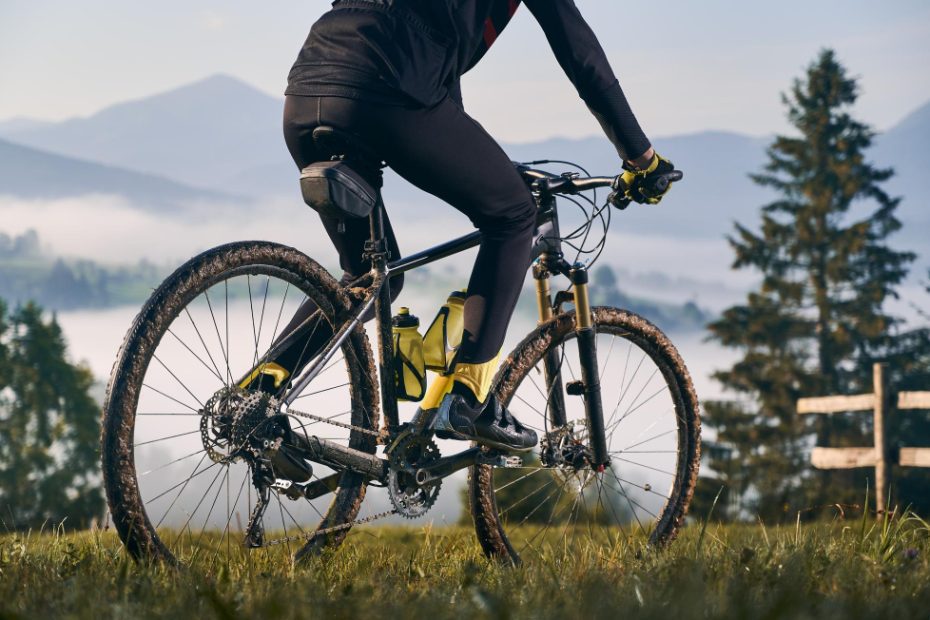What is the Best Rim Depth for Cyclocross?
Cyclocross is a unique cycling discipline that combines elements of road racing and off-road biking. With its mix of paved roads, gravel, mud, and obstacles, cyclocross requires equipment that can handle various terrains. One important component of a cyclocross bike is the rim depth.
The rim depth refers to the height of the rim from the braking surface to the top edge. It plays a crucial role in the performance and handling of the bike, particularly in terms of aerodynamics, stability, and weight. However, determining the best rim depth for cyclocross depends on several factors, including the course conditions, rider skill level, and personal preference.
Aerodynamics in Cyclocross
Aerodynamics is an essential consideration in any cycling discipline, including cyclocross. A deeper rim depth, typically around 40-60mm, can offer aerodynamic benefits by reducing drag and improving speed on flat and rolling sections of the course. This can be advantageous during the fast-paced sections of a cyclocross race, where maintaining speed is key.
However, it’s important to note that cyclocross courses often include technical sections, such as tight corners and steep climbs, where aerodynamics have less impact. In these situations, a shallower rim depth, around 25-35mm, may provide better maneuverability and responsiveness.
Stability and Handling
Rim depth also affects the stability and handling of a cyclocross bike. Deeper rims can provide greater stability, especially in adverse weather conditions or on uneven terrain. The increased mass of deeper rims helps with maintaining momentum and reducing the impact of rough surfaces.
On the other hand, shallower rims offer improved handling and responsiveness, making them a popular choice for technical cyclocross courses with tight turns and quick accelerations. They also tend to be lighter, which can enhance climbing performance.
Course Conditions and Rider Skill Level
Course conditions play a significant role in determining the ideal rim depth for cyclocross. If the course consists mostly of flat or rolling sections, a deeper rim can provide an advantage by improving aerodynamics and speed. On the other hand, if the course is more technical with tight turns and steep climbs, a shallower rim may be preferable for better handling and maneuverability.
Rider skill level and experience also play a crucial role in choosing the right rim depth. Beginners or less experienced riders may find it easier to handle a shallower rim depth, as it offers improved control and responsiveness. Advanced or more skilled riders, on the other hand, might benefit from the aerodynamic advantages of deeper rims, especially on flatter and faster courses.
Ultimately, the best rim depth for cyclocross depends on a combination of factors, including course conditions, rider skill level, and personal preference.
It’s worth noting that many professional cyclocross racers opt for different rim depths based on specific race conditions. Some even use wheelsets with interchangeable rims, allowing them to adjust their equipment to suit different courses.
| Rim Depth | Advantages | Disadvantages |
|---|---|---|
| Shallow (25-35mm) | Better handling and responsiveness Lighter weight Improved maneuverability in technical sections |
Less aerodynamic efficiency on flat sections Potentially less stability on rough surfaces |
| Deep (40-60mm) | Improved aerodynamics and speed on flat sections Greater stability in adverse conditions Reduced impact of rough surfaces |
Less maneuverability in technical sections Heavier weight |
- Consider the specific course conditions and terrain you will be riding on.
- Evaluate your own skill level and comfort with different rim depths.
- Take into account the trade-offs between aerodynamics, stability, and handling.
- Seek advice from experienced cyclocross riders or bike specialists to help make an informed decision.
- Consider using wheelsets with interchangeable rims for versatility.
In conclusion, there is no one-size-fits-all answer to the best rim depth for cyclocross. It depends on a variety of factors, including course conditions, rider skill level, and personal preference. Understanding the advantages and disadvantages of different rim depths can help you make an informed decision to optimize your performance in cyclocross races.
What is the best gear ratio for cyclocross?
Introduction
Cyclocross is a demanding sport that requires cyclists to navigate various terrains, including grass, mud, and pavement. Choosing the right gear ratio is essential to ensure optimal performance and efficiency during these races. The gear ratio refers to the number of teeth on the front chainrings compared to the number of teeth on the rear cassette.
Factors to Consider
When determining the best gear ratio for cyclocross, several factors need to be taken into account:
Terrain: The type of terrain you will be riding on plays a crucial role in selecting the appropriate gear ratio. For muddy or hilly courses, a lower gear ratio with smaller chainrings and larger cassettes can provide better traction and help you tackle challenging climbs.
Speed: The average speed you intend to maintain throughout the race also affects gear ratio selection. If you are aiming for higher speeds on relatively flat sections, a larger gear ratio with bigger chainrings and smaller cassettes can help you achieve that.
Ability: Your individual strength and cycling ability influence the gear ratio that suits you best. It’s important to find a balance between a gear ratio that challenges you but doesn’t exhaust you too quickly.
Recommended Gear Ratios
For most cyclocross riders, a gear ratio range of 46/36 (front) and 11-32 (rear) is a good starting point. This setup offers versatility and allows you to handle different course conditions effectively.
However, it’s important to note that gear ratios are subjective and vary based on personal preferences and racing conditions. Some riders may prefer a wider range of gears, such as a 46/36 (front) and 11-34 (rear), for extra climbing capabilities.
Tips for Fine-tuning
Adjusting your gear ratio can be done by swapping chainrings or cassettes. Here are a few tips to help you fine-tune your gear ratio:
- Experiment: Try out different gear ratios during training sessions to find the combination that best suits your riding style and abilities.
- Consider course conditions: If you know the upcoming race will be particularly hilly or muddy, adjust your gear ratio accordingly.
- Seek professional advice: Consult with experienced cyclocross riders or bike shop experts who can provide guidance based on their expertise and knowledge.
Remember, finding the best gear ratio for cyclocross is a personal endeavor. What works for one rider may not work for another. It’s essential to experiment, make adjustments, and listen to your body and performance feedback to optimize your gear ratio.
In conclusion, selecting the best gear ratio for cyclocross involves considering factors such as terrain, speed, and individual ability. A gear ratio range of 46/36 (front) and 11-32 (rear) is a good starting point for most riders, but it’s important to fine-tune and adjust based on personal preferences and course conditions. Cyclocross is a dynamic sport, and finding the perfect gear ratio can greatly enhance your performance and enjoyment of the races.



